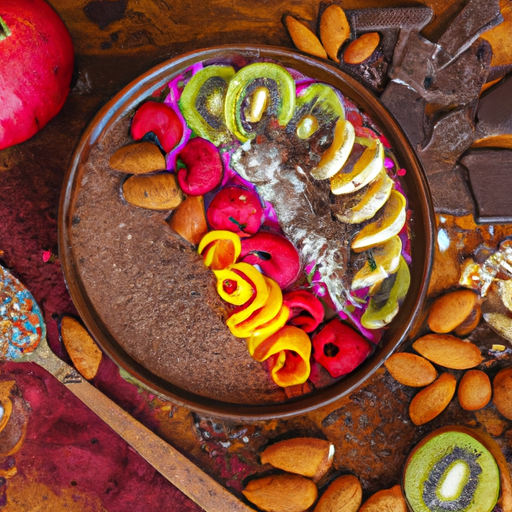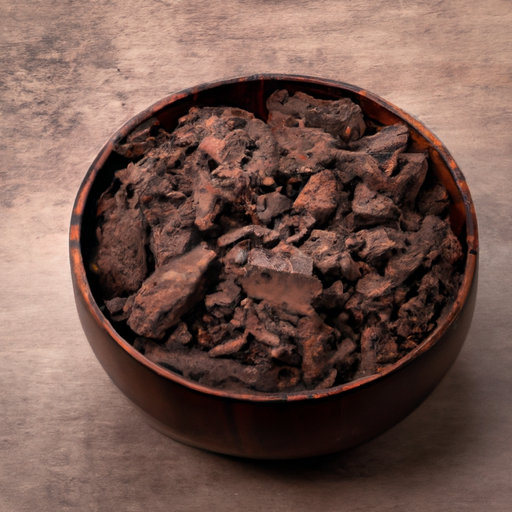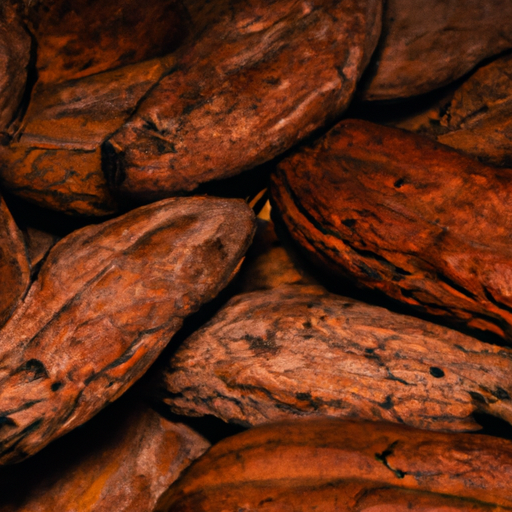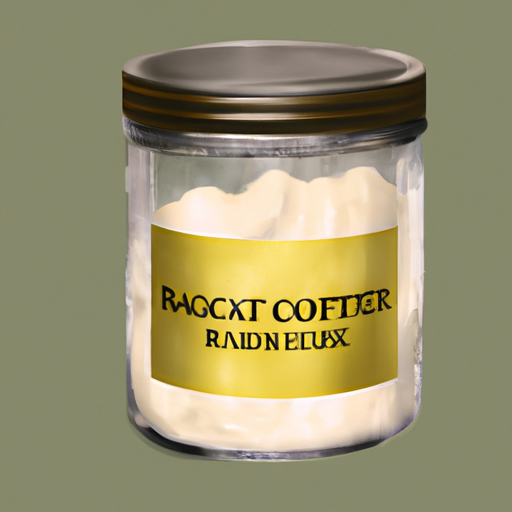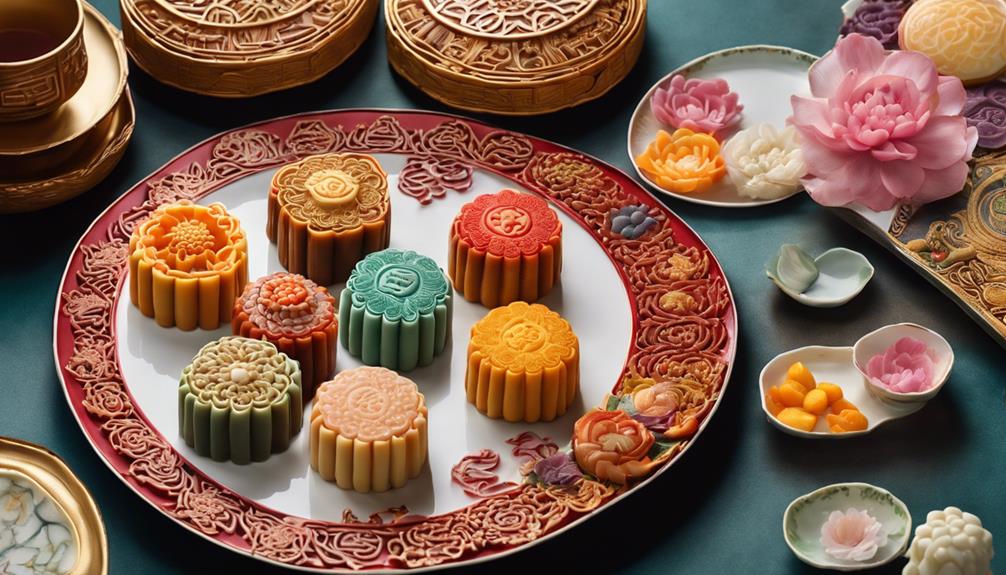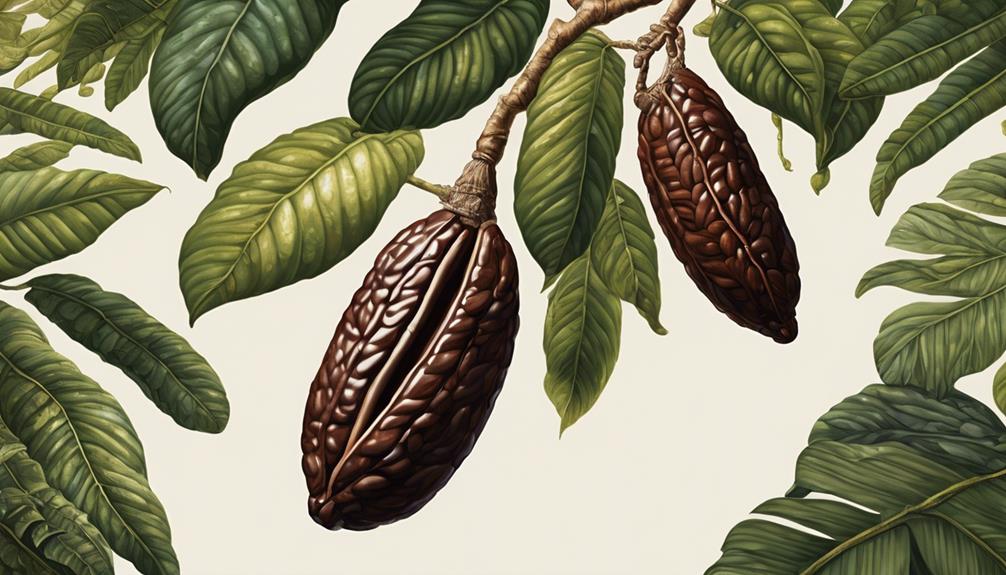Have you been made aware of the amazing health benefits raw cacao powder can offer? It’s absolutely true!
According to studies, incorporating raw cacao powder into your diet can provide numerous benefits. For instance, did you know that raw cacao powder is packed with essential nutrients like magnesium, iron, and antioxidants? These nutrients are known to support various aspects of our health, from boosting mood and mental health to enhancing physical performance and energy levels.
Additionally, raw cacao powder has been shown to support heart health, improve digestion, and even provide antioxidant protection for anti-aging benefits. Plus, it can help regulate blood sugar levels and support weight management, making it a great addition to a healthy diet.
Not to mention, raw cacao powder can also promote healthy skin and hair.
So, if you’re looking for a delicious and nutritious way to improve your overall health, consider adding raw cacao powder to your daily routine.
Key Takeaways
- Raw cacao powder promotes healthy skin and hair.
- It contains antioxidants that fight free radicals and prevent premature aging.
- Raw cacao powder improves blood flow and enhances delivery of oxygen and nutrients to the skin and scalp.
- It stimulates hair growth and contains essential minerals for strong and healthy hair.
Nutritional Profile of Raw Cacao Powder
Raw cacao powder has a rich nutritional profile, offering a variety of health benefits. Firstly, it is bursting with antioxidants that protect cells from damage caused by free radicals. These antioxidants contribute to overall health and well-being.
In addition, raw cacao powder is a great source of magnesium, which supports healthy muscle and nerve function. It also contains iron, an essential mineral that aids in the production of red blood cells.
Furthermore, raw cacao powder contains flavonoids, which have been linked to a reduced risk of heart disease. These compounds have been shown to have positive effects on cardiovascular health.
Moreover, raw cacao powder is rich in fiber, promoting healthy digestion and aiding in maintaining a healthy weight. The fiber content also helps to regulate blood sugar levels.
Overall, the nutritional benefits of raw cacao powder make it an excellent addition to any diet. It provides a wide range of nutrients that nourish the body and support overall health.
Moving on to the next section, raw cacao powder also has mood-boosting and mental health benefits.
Boosts Mood and Mental Health
Indulging in cacao powder can elevate your mood and enhance your mental well-being, leaving you feeling happier and more content.
According to a study, regularly consuming cacao can significantly reduce symptoms of depression and anxiety. Cacao contains compounds that stimulate the production of endorphins, which are known as the ‘feel-good’ hormones. These endorphins help to boost productivity and improve cognitive function.
Additionally, cacao is rich in flavonoids, which have been shown to enhance brain function and increase blood flow to the brain. This improved blood flow can enhance mental clarity and focus.
So, if you’re looking for a natural way to improve your mood and mental health, incorporating cacao powder into your diet may be worth considering.
It’s time to explore how cacao also enhances physical performance and energy levels.
Enhances Physical Performance and Energy Levels
Boost your physical performance and energy levels by incorporating cacao into your diet. Here are three ways raw cacao powder enhances endurance and increases stamina:
-
Improved oxygen delivery: Cacao contains high levels of flavonols, which help widen blood vessels and improve blood flow. This increased blood flow ensures muscles receive more oxygen during exercise, leading to enhanced endurance.
-
Energy boost: Cacao is a natural source of caffeine, providing a gentle energy kick without the jitters. It stimulates the central nervous system, increasing alertness and reducing fatigue, allowing you to push harder during workouts.
-
Muscle recovery: The antioxidants in cacao help reduce exercise-induced muscle damage and inflammation. This promotes faster recovery and reduces muscle soreness, allowing you to bounce back quicker for your next training session.
By incorporating cacao into your routine, you can enhance your physical performance and energy levels.
Additionally, cacao supports heart health and lowers blood pressure, providing further benefits for your overall well-being.
Supports Heart Health and Lowers Blood Pressure
Incorporating cacao into your diet can have a positive impact on your heart health and help lower blood pressure. Studies have shown that the flavanols found in raw cacao powder have the potential to improve cardiovascular function and reduce the risk of heart disease. These powerful antioxidants can help relax and dilate blood vessels, improving blood flow and reducing high blood pressure. Additionally, cacao contains high amounts of magnesium, a mineral that plays a crucial role in maintaining a healthy heart.
To better understand the benefits of cacao for heart health and blood pressure, take a look at the table below:
| Benefits of Cacao for Heart Health and Blood Pressure |
|---|
| Improves cardiovascular function |
| Reduces the risk of heart disease |
| Relaxes and dilates blood vessels |
Incorporating raw cacao powder into your diet can be a delicious way to support your heart health and promote lower blood pressure. Moving on to the next section, let’s explore how cacao improves digestive health and gut function.
Improves Digestive Health and Gut Function
Nourishing your gut with the rich and velvety goodness of cacao can pave the way for a smoother digestive journey and a well-functioning gut. Here are a few reasons why raw cacao powder is beneficial for improving digestion and gut function:
- Increases enzyme production, aiding in the breakdown of food.
- Enhances nutrient absorption, ensuring your body receives the maximum benefit from the food you eat.
- Promotes healthy gut bacteria growth, which supports overall gut health.
- Reduces inflammation in the gut, alleviating digestive discomfort.
- Boosts serotonin levels, promoting a positive mood and reducing stress-related digestive issues.
By improving digestion and gut function, raw cacao powder sets the stage for optimal health and well-being.
In addition to these benefits, it also provides antioxidant protection and anti-aging benefits.
Provides Antioxidant Protection and Anti-Aging Benefits
Not only does raw cacao powder improve digestive health and gut function, but it also provides antioxidant protection and anti-aging benefits.
As someone who has incorporated raw cacao powder into my diet, I have experienced firsthand the positive effects it has on my overall well-being.
The antioxidant properties of raw cacao powder help to reduce oxidative stress and combat free radicals in the body, which can lead to premature aging.
Additionally, the high levels of flavonoids found in raw cacao powder promote healthy skin and improve collagen production, resulting in a more youthful appearance.
This natural anti-aging remedy is a delicious and practical way to support a healthy lifestyle.
Now, let’s delve into how raw cacao powder regulates blood sugar levels and supports weight management without compromising on taste or satisfaction.
Regulates Blood Sugar Levels and Supports Weight Management
Raw cacao powder has several benefits when it comes to regulating blood sugar levels and supporting weight management.
Firstly, raw cacao powder has a low glycemic index, which means it doesn’t cause a rapid spike in blood sugar levels. This is particularly advantageous for individuals with diabetes or those who want to regulate their blood sugar levels.
Secondly, the high fiber content in raw cacao powder helps to slow down the digestion process. This promotes a feeling of fullness and reduces cravings, which can aid in weight management. By preventing overeating and promoting portion control, raw cacao powder can be a valuable tool in maintaining a healthy weight.
Additionally, raw cacao powder contains compounds such as flavonoids and polyphenols. These compounds have been shown to support weight loss by increasing fat oxidation and reducing inflammation.
With its blood sugar regulating properties and potential for weight management, raw cacao powder becomes an ally in achieving a balanced and sustainable lifestyle.
These benefits of raw cacao powder set the stage for the subsequent section about how it promotes healthy skin and hair.
Promotes Healthy Skin and Hair
Indulge in the rich goodness of raw cacao powder and let your skin and hair shine like a diamond in the rough. Raw cacao powder is not only a delicious treat for your taste buds but also a secret weapon for achieving healthy skin and luscious locks.
Packed with antioxidants, it helps fight against free radicals, preventing premature aging and promoting a youthful complexion. The flavonoids found in raw cacao powder improve blood flow, enhancing the delivery of oxygen and nutrients to the skin and scalp, promoting a healthy glow and stimulating hair growth.
Additionally, raw cacao powder contains essential minerals like magnesium and copper, which play a crucial role in maintaining strong and healthy hair.
So, why not treat yourself to a cacao-infused smoothie or sprinkle some on your morning oatmeal for a tasty way to nourish your body from the inside out.
Delicious Ways to Incorporate Raw Cacao Powder into Your Diet
Discover the delectable ways to infuse raw cacao powder into your daily diet and experience a burst of flavor that will leave your taste buds craving for more. Raw cacao powder is not only nutritious but also versatile, making it easy to incorporate into various recipes. Here are some unique recipes to try:
| Category | Recipe |
|---|---|
| Smoothies | Cacao-Banana Smoothie |
| Desserts | Raw Cacao Energy Balls |
| Breakfast | Cacao Overnight Oats |
| Snacks | Cacao-Dusted Almonds |
| Beverages | Hot Cacao Drink |
These recipes will not only satisfy your chocolate cravings but also provide you with the numerous health benefits of raw cacao powder. However, it is important to be aware of potential side effects such as caffeine sensitivity or allergic reactions. Always consult with a healthcare professional if you have any concerns. So go ahead, get creative in the kitchen, and enjoy the deliciousness that raw cacao powder brings to your meals.
Frequently Asked Questions
Can raw cacao powder be used as a substitute for cocoa powder in recipes?
Raw cacao powder can be a healthy substitute for cocoa powder in recipes. It contains more nutrients and antioxidants, which can support heart health, improve mood, and boost brain function.
Are there any potential side effects or risks associated with consuming raw cacao powder?
There may be potential allergic reactions to raw cacao powder, such as skin rashes or itching. It can also impact blood pressure, so individuals with hypertension should consume it in moderation.
How much raw cacao powder should be consumed daily to reap its health benefits?
To reap the health benefits of raw cacao powder, it is recommended to consume it daily. Raw cacao powder is different from processed cocoa powder as it retains more nutrients and antioxidants.
Is raw cacao powder safe for children to consume?
Raw cacao powder can be safe for children to consume, but in moderation. It offers health benefits like providing essential nutrients and antioxidants. However, children may be more sensitive to its stimulant effects, so it’s important to monitor their intake.
Can raw cacao powder help with managing symptoms of depression or anxiety?
Raw cacao powder has been shown to boost mood and reduce stress. It contains compounds like phenylethylamine and anandamide, which promote feelings of happiness and relaxation. Incorporating it into my diet has improved my mental well-being.
How Does Raw Cacao Powder Compare to Raw Cacao Beans in Terms of Health Benefits?
Raw cacao powder and raw cacao beans both offer numerous raw cacao bean benefits. However, raw cacao powder is more concentrated and versatile, making it easier to incorporate into various recipes and drinks. Raw cacao beans are whole and retain more of their natural nutrients, offering a more traditional way to enjoy their health benefits.
Conclusion
In conclusion, incorporating raw cacao powder into my diet has been a game-changer. Its nutritional profile is off the charts, providing a burst of energy and boosting my mood like never before.
My heart health has improved, and my blood pressure has lowered. Plus, my digestion is on point and my gut is happy.
With its antioxidant power, my skin is glowing and my hair is luscious. And let’s not forget, it helps me maintain a healthy weight and regulates my blood sugar levels.
Delicious and beneficial, raw cacao powder is a must-have in my pantry.

